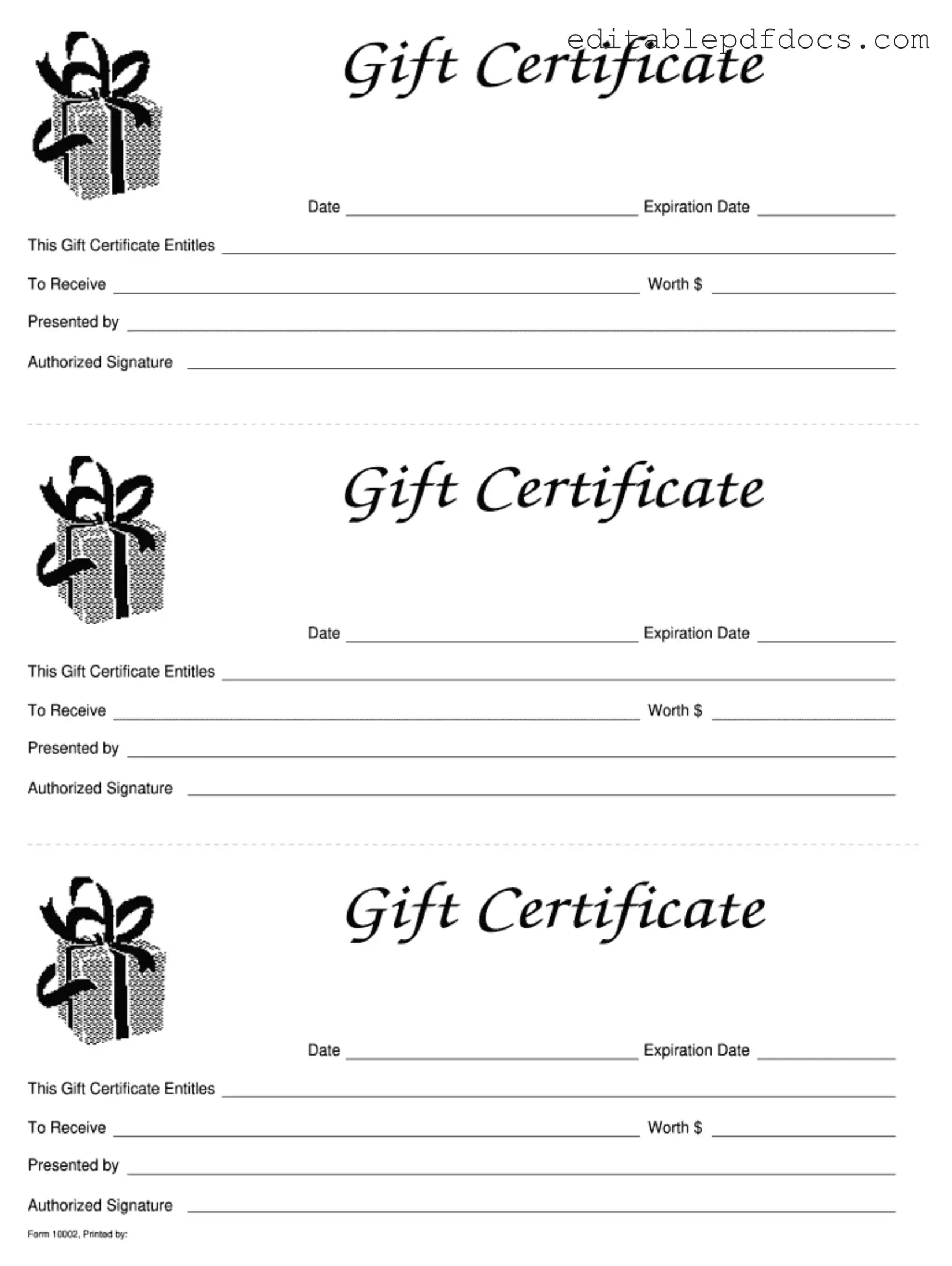Fill a Valid Gift Certificate Template
A Gift Certificate form is a document that allows individuals to purchase a certificate redeemable for goods or services at a specified business. This form typically includes details such as the recipient's name, the value of the certificate, and any expiration dates. To get started, fill out the form by clicking the button below.
Open Editor Now
